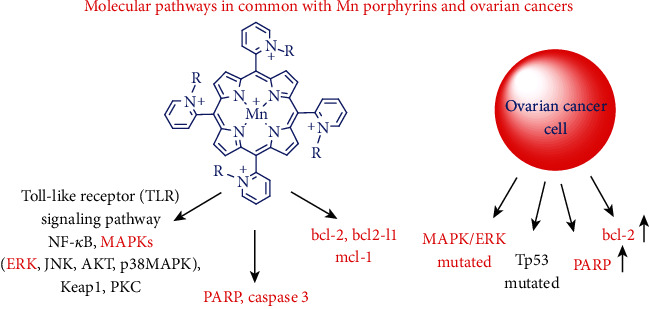Figure 6.

Molecular pathways upregulated in ovarian cancer cells that coincide with those which are affected by Mn(III) N-substituted pyridylporphyrins. Common pathways are indicated in red. In breast cancer studies, MnPs were found to operate predominantly via the TLR pathway with NF-κB, p38 MAPK, MAPK14, and HSP60 being components of it. It was also found that MnP inhibits the antiapoptotic proteins, bcl-2 and mcl-1, which are overexpressed in high-grade serous cancer cells [129], thus promoting apoptotic pathways (see Figure 2). PARP is also overexpressed in several types of ovarian cancer cells, and MnP was found to suppress its activity via increasing levels of inactive cleaved PARP (Figure 2) [137]. MnP was also found to increase the levels of activated, cleaved caspase 3 [137]. TP53 and MAPK/ERK are mutated in low-grade serous cancer [127] allowing for the therapeutic interventions with their inhibitors, MnPs prospectively being one of those. R in the structure of MnPs indicates ortho-N-alkyl- or N-alkoxyalkylpyridyl substituents.
